In the 1930s, a series of factors led to an aesthetic revolution for the automobile. During the Great Depression, car manufacturers faced diminished sales, particularly in the luxury market. To win over the few buyers who could afford new vehicles, companies debuted innovative designs, shaping their vehicle lineups into works of art. Streamlined, aerodynamic bodies inspired by the Art Deco movement appeared for the first time, establishing some of the most beautiful industrial objects of the 20th century.
The automotive designs of the early to mid-1900s captivated the American businessman and philanthropist Peter Mullin and his wife, Merle, who built this remarkable and comprehensive collection. According to Jim Hull, Mullin’s close friend and fellow car enthusiast, this passion began when Jim brought a 1937 Delahaye 135 MS Chapron to Mullin’s house to photograph it. The two didn’t know one another well, but after seeing one of the pictures that came from the photoshoot Mullin fell head-over-heels into the world of collecting, taking frequent trips to France to research these vehicles.

Interior of the Mullin Automotive Museum in Oxnard, California. Photographed by Michael Furman for the Mullin Automotive Museum
Over nearly 30 years, the Mullins amassed and restored such a variety of Bugattis, Delahayes, Talbots and Delages that they opened the Mullin Automotive Museum in Oxnard, California, in 2010, which exhibited these works of art in context, surrounding them with period objects such as vintage signage and Bugatti furniture.
In addition to the museum, Mullin served as Chairman of the Board of the Petersen Automotive Museum, President of the American Bugatti Club, and an active participant and supporter of the Los Angeles Community. His life was a testament to informed and passionate collecting, and the legacy he left is now carried on by these remarkable vehicles.

Interior engine stamping of the 1930 Bugatti Type 46 Semi-Profilée Coupe chassis plate (illustrated below). Photographed by Michael Furman for the Mullin Automotive Museum
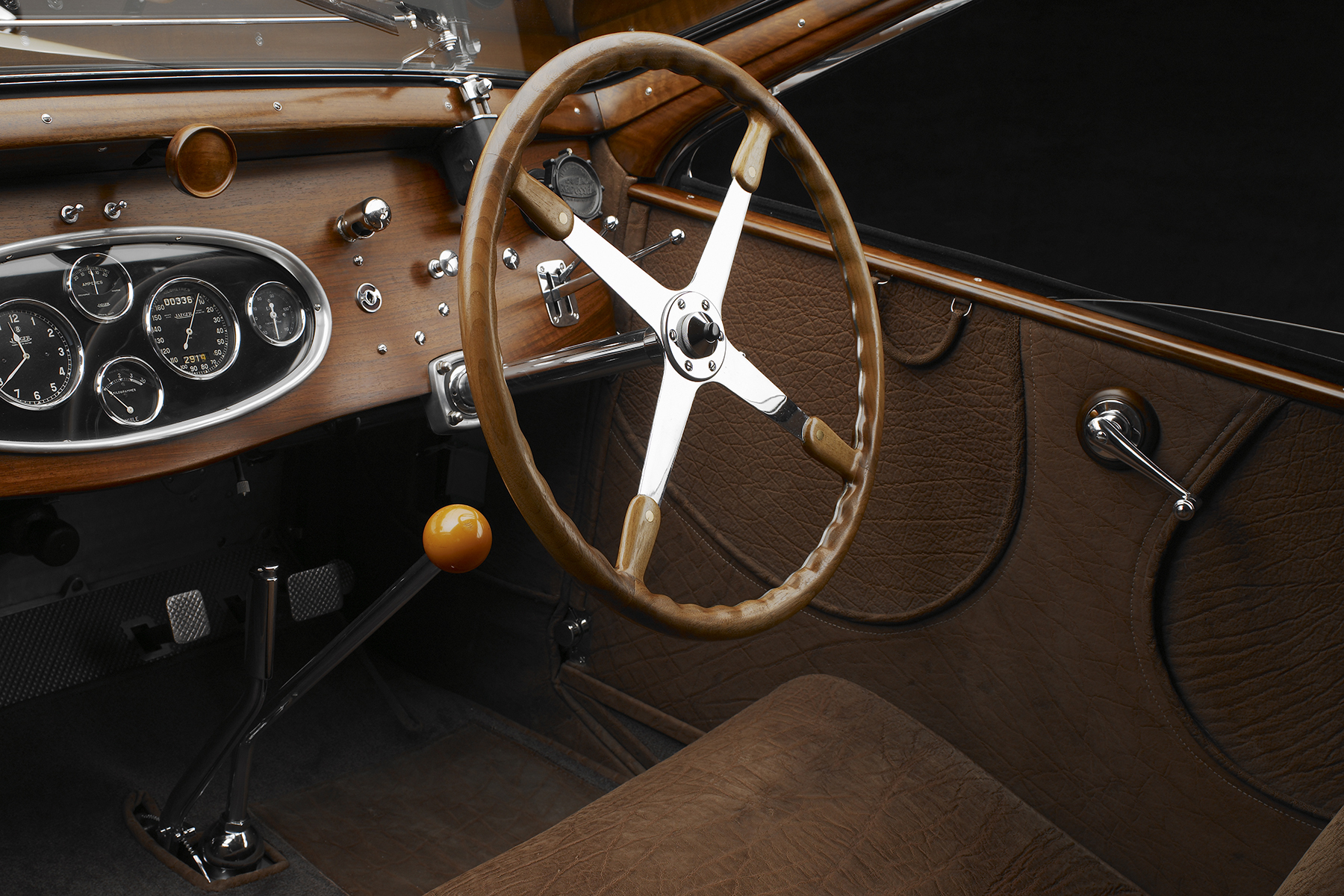
Interior detail of the 1930 Bugatti Type 46 Semi-Profilée Coupe (illustrated below). Photographed by Michael Furman for the Mullin Automotive Museum
‘Visiting the museum was like stepping into the Paris Auto Salon of 1937 or 1938. Peter and Merle created a unique place visited by collectors from all over the world,’ says David Gooding, President and Co-Founder of Gooding & Company, who has been entrusted to sell a portion of the singular collection later this month.
Peter and Merle would famously go to great lengths to restore cars to their authentic appearance. They hunted down the original manufacturers of interior fabrics. With one car in particular, the Mullins found original drawings in order to re-construct the coachwork on a 1939 Type 64 Bugatti that had never been built because of WWII.
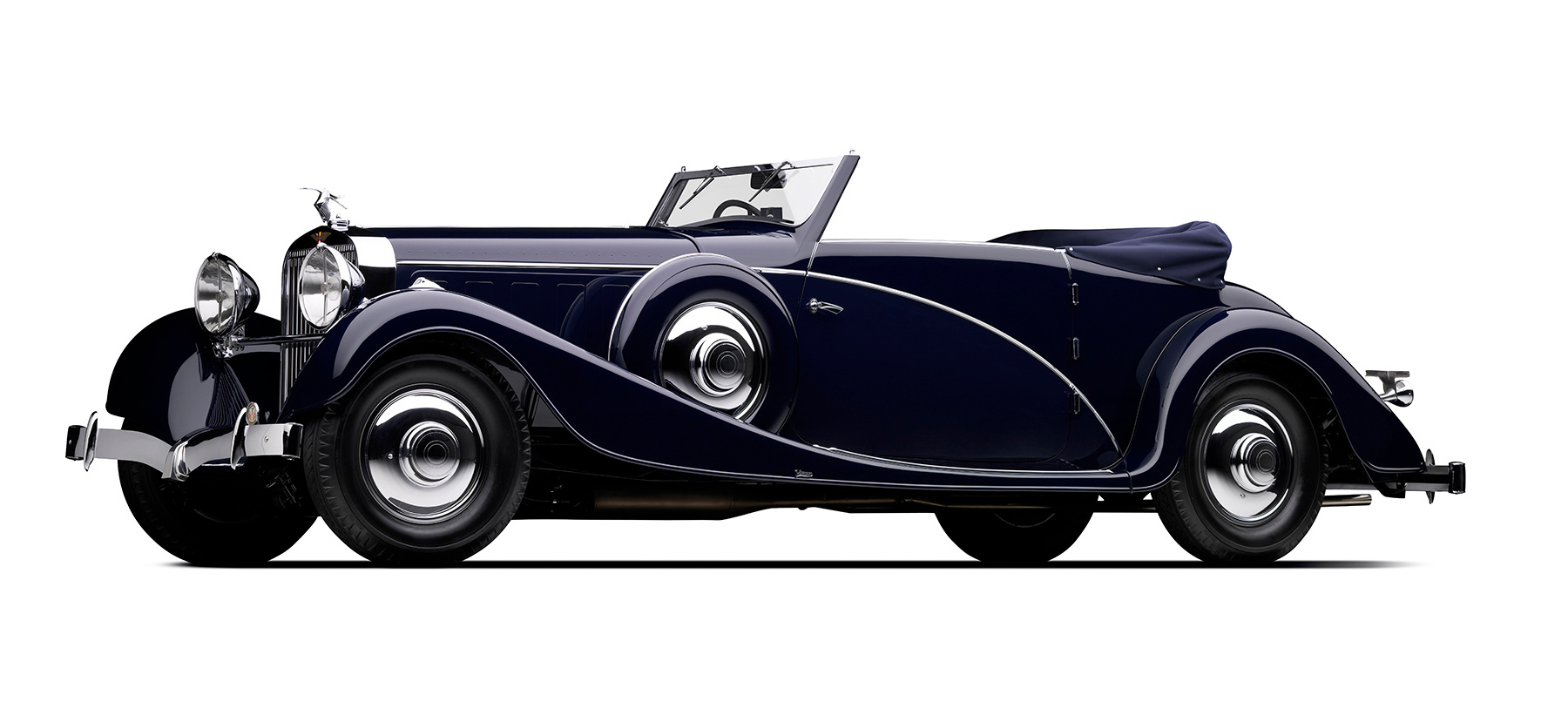
1933 Hispano-Suiza J12 Cabriolet. Coachwork by Vanvooren. Photographed by Michael Furman for the Mullin Automotive Museum
Amongst the highlights of Mullin’s collection is a 1933 Hispano-Suiza J12 Cabriolet. Considered the pinnacle of elegance in the 1930s, the J12 was designed by Marc Birkigt, Hispano-Suiza’s brilliant Swiss engineer. Each J12 model was sold as a chassis, and the customer would arrange with an external coachbuilder to construct the body. Of the 100 or so models produced, this chassis, incredibly crafted by Vanvooren, is one of no more than a handful that perfectly capture what luxury looked like in the 1930s.
‘This is one of the finest cars of the pre-war period,’ says Gooding. ‘Birkigt’s work was so advanced and so high quality that many other manufacturers would go on to take inspiration from it in the following years.’
This J12 also boasts provenance from notable collectors such as Dr. Samuel Scher, Richard Paine and John Mozart. It joined the Mullin Collection in 1992 and has been shown at the Pebble Beach Concours; d’Elegance®, in California — widely considered the most prestigious auto show in the world — where it has received numerous Class Awards.
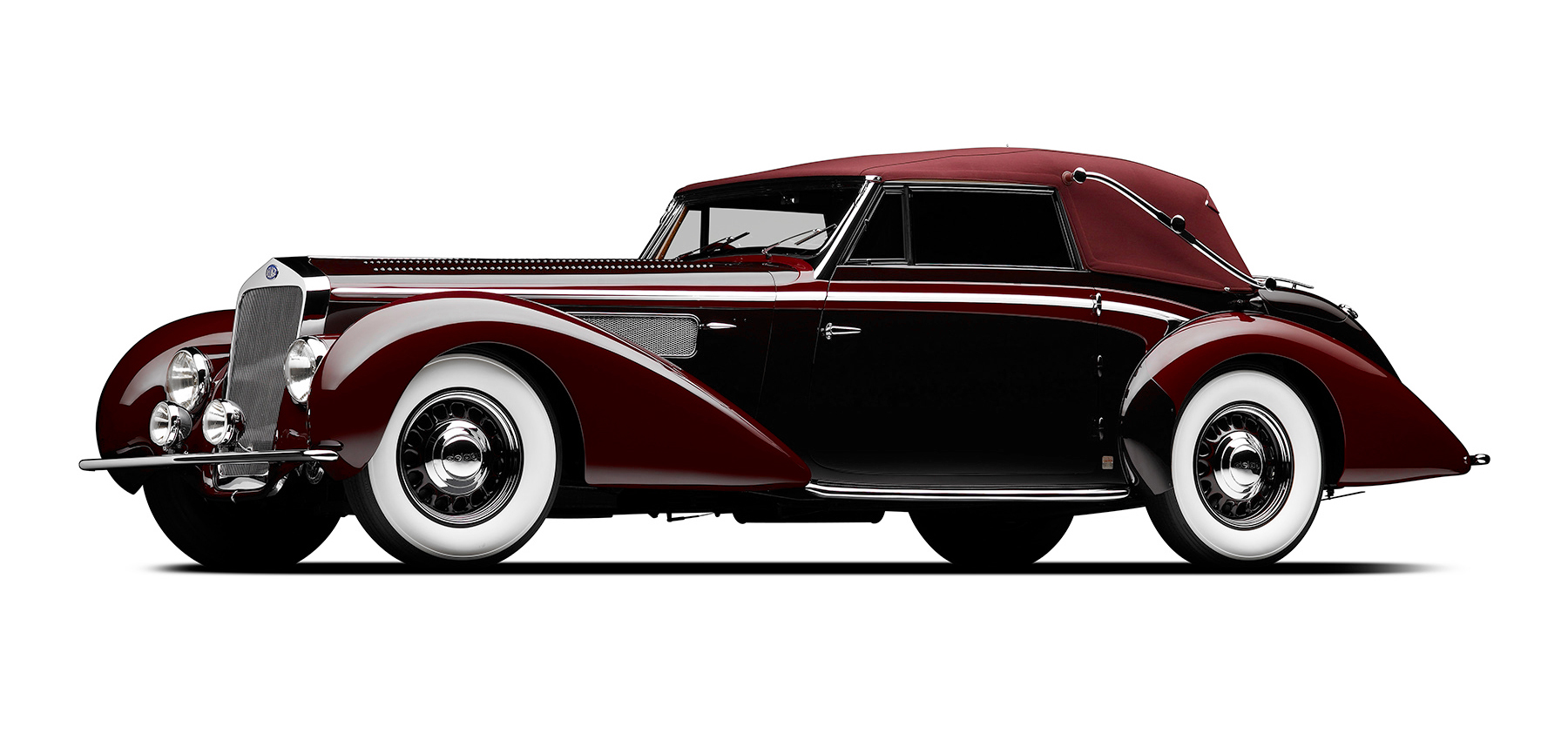
1937 Delage D8-120 Three-Position Cabriolet. Coachwork by Chapron. Photographed by Michael Furman for the Mullin Automotive Museum
Another standout is Mr. Mullin’s 1937 Delage D8-120 Three-Position Cabriolet by Chapron. ‘Peter’s passion for celebrating French automobiles of the Art Deco era really focused attention on these cars, such as Delahayes, Delages, and Talbot-Lagos,’ says Gooding. ‘Particularly in the United States, where prior to Mullin, most collectors had not appreciated the importance and beauty of great French marques. The Mullins played a great role in singlehandedly changing this perspective in the US.’
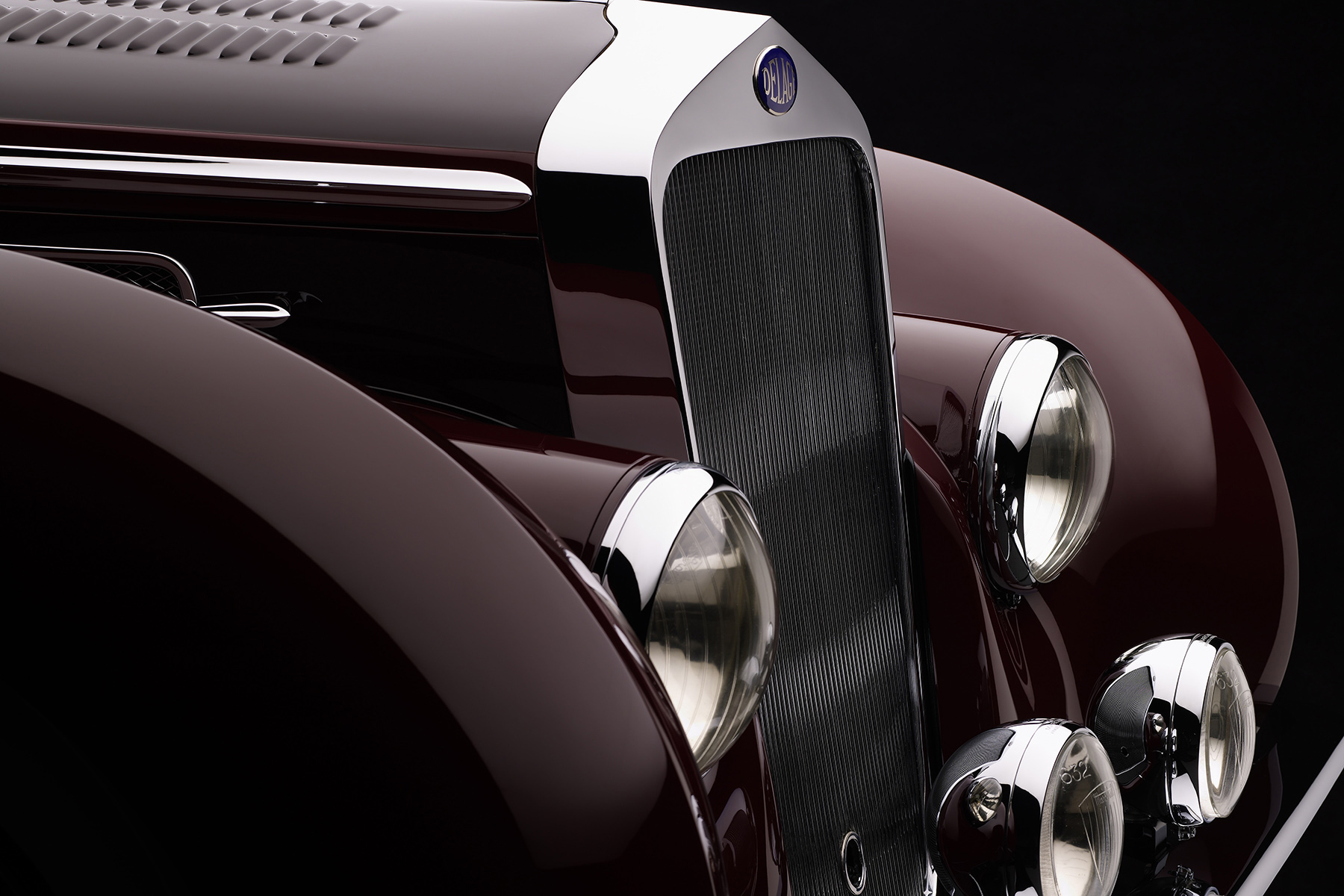
Exterior detail of the 1937 Delage D8-120 Three-Position Cabriolet. Coachwork by Chapron. Photographed by Michael Furman for the Mullin Automotive Museum
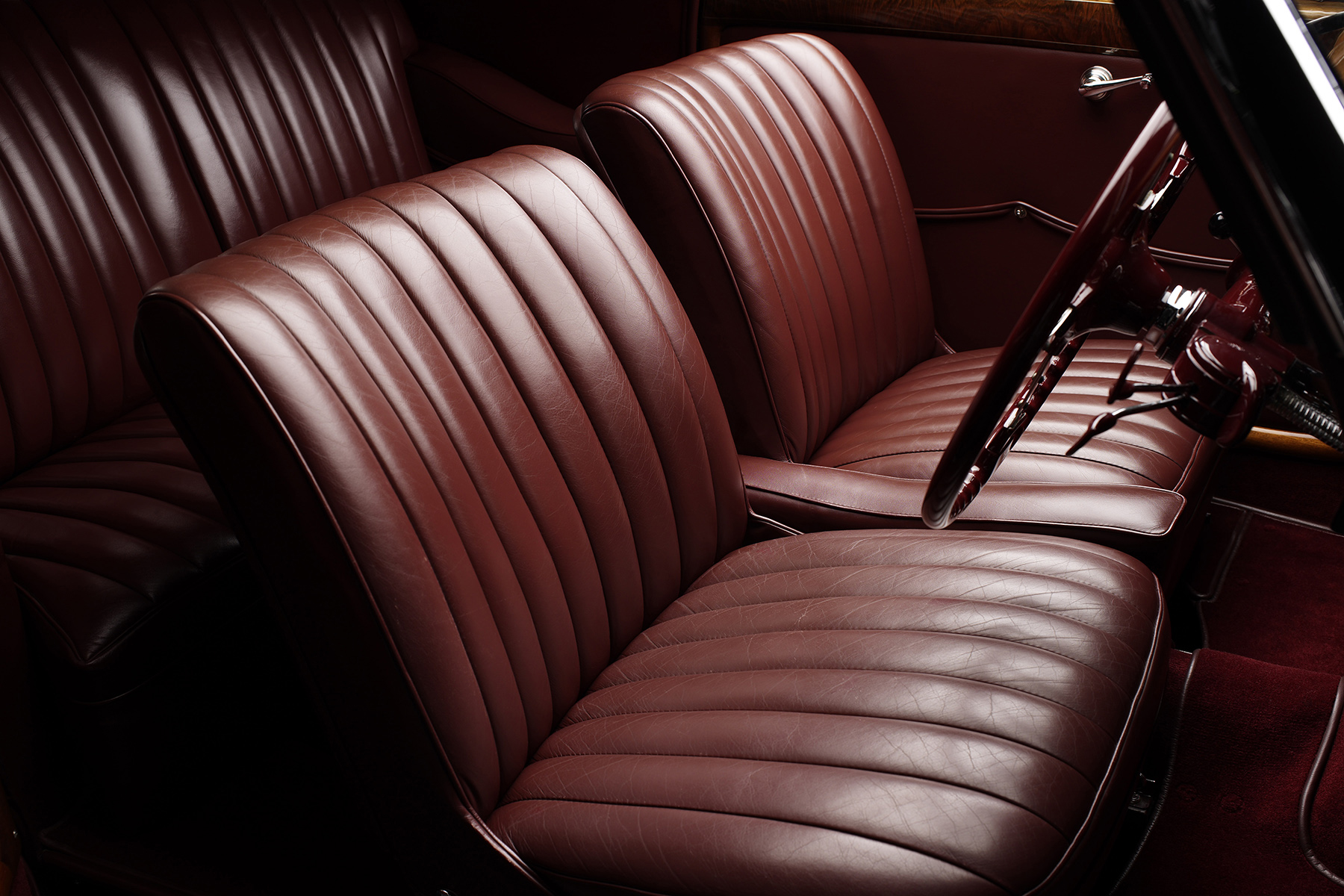
Interior detail of the 1937 Delage D8-120 Three-Position Cabriolet. Coachwork by Chapron. Photographed by Michael Furman for the Mullin Automotive Museum
This D8-120 has a Hollywood history: it appeared alongside Gene Kelly and Leslie Caron in An American in Paris. Following its discovery and exhaustive restoration for the Mullins, it was awarded in the Chapron Coachwork class at the 2016 Pebble Beach Concours d’Elegance®.
One of the more widely recognised names in automobiles, Bugatti was started in 1909 by automobile designer Ettore Bugatti. From the beginning, Bugattis were synonymous with quality — both under the hood and in the artistry of their exteriors. The latter was perhaps no surprise, as Ettore’s father Carlo Bugatti was a highly successful jewellery and furniture designer in the Art Nouveau mode.

1930 Bugatti Type 46 Semi-Profilée Coupe. Photographed by Michael Furman for the Mullin Automotive Museum
This Type 46 was built in 1930 — one year after Bugatti won the first ever Monaco Grand Prix — and ordered by Bugatti agent Vladimir Gut in Prague. Over the years, the vehicle’s distinguished owners have implemented various enhancements. Particularly noteworthy is the installation of a replica of one of the most exquisite coachworks to grace a Type 46, known as a Semi-Profilée. ‘This car is both beautiful and incredibly advanced for the ’30s,’ says Gooding. ‘Back then most cars had upright windows, but the Type 46 is all flow. This streamlined windshield had a tremendous influence on both American and European manufacturers alike.’
One of the greatest automobiles in Mr. Mullin’s collection is the 1938 Bugatti Type 57C Aravis ‘Special Cabriolet’. The Type 57, which debuted in 1934, quickly became Bugatti’s best-selling road model and the 57C, which boasted a supercharged engine, took its performance to new heights. Partnering with the French coachbuilder Gangloff, they offered the cabriolet body known as the Aravis, named after a pass in the French Alps. The present Type 57C is undoubtedly amongst the best of only four examples of that body.
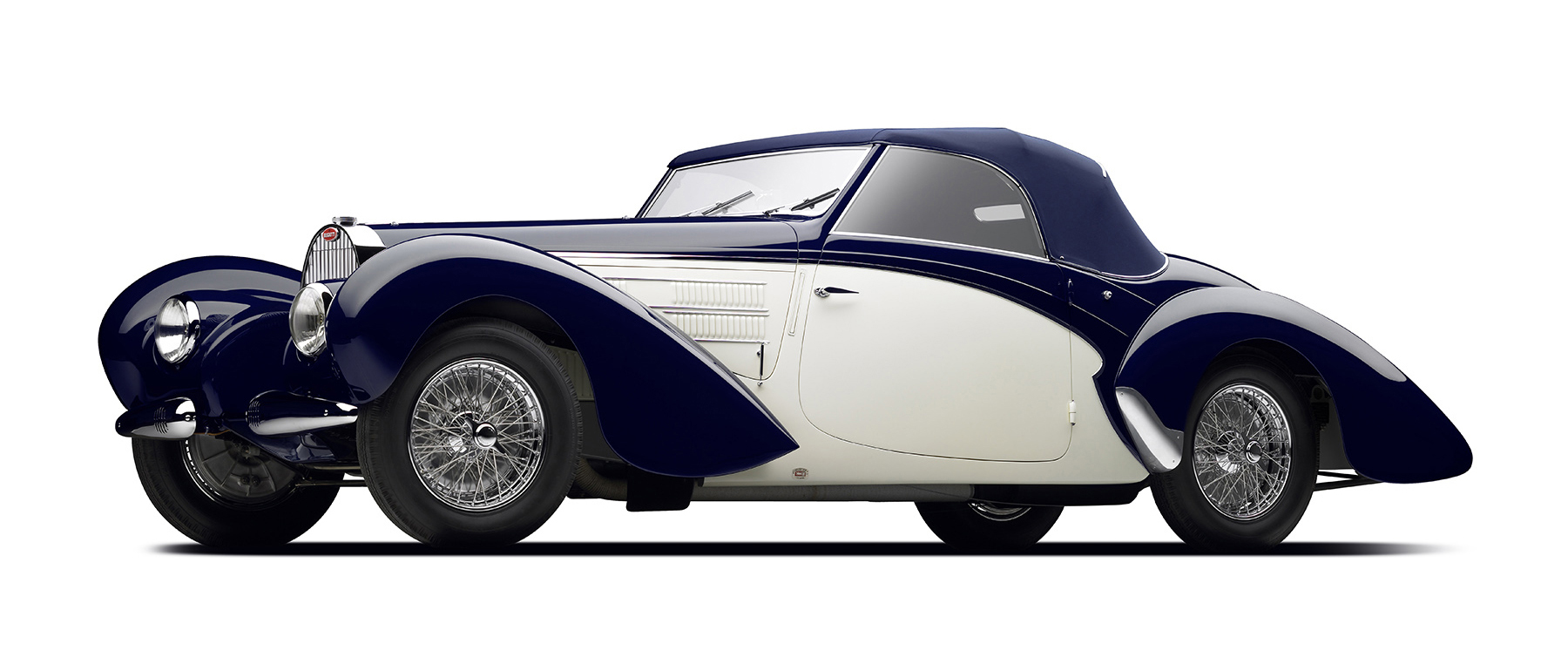
1938 Bugatti Type 57C Aravis ‘Special Cabriolet’. Coachwork by Gangloff. Photographed by Michael Furman for the Mullin Automotive Museum
‘Originally built for Bugatti factory driver Maurice Trintignant, this is one of four, and probably the best, to survive of these cars,’ says Gooding. ‘He famously drove for Bugatti, but he was also a Scuderia Ferrari driver and truly one of the great drivers of both the pre- and post-war period.’ Trintignant competed in Formula One from 1950-64, and won the 24-hour Le Mans race in 1954, while this chassis was raced by him at the Grand Prix du Commiges in 1939.
Later, under Mullin’s ownership it was awarded First in Class at the 2005 Pebble Beach Concours d’Elegance®, which Trintignant attended, bringing the car’s storied career full circle.

Interior detail of the 1938 Bugatti Type 57C Aravis ‘Special Cabriolet’. Coachwork by Gangloff. Photographed by Michael Furman for the Mullin Automotive Museum
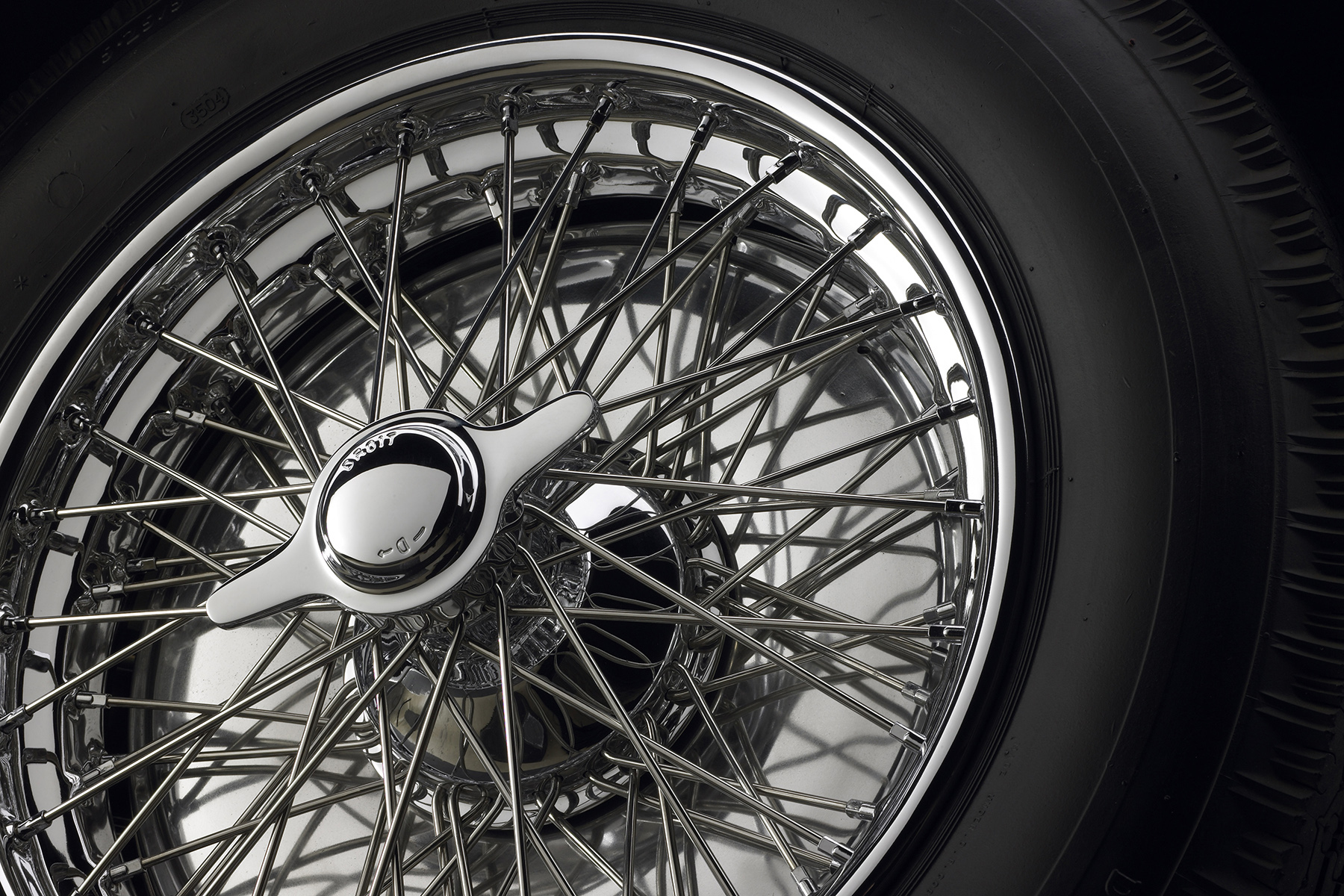
Exterior detail of the 1938 Bugatti Type 57C Aravis ‘Special Cabriolet’. Coachwork by Gangloff. Photographed by Michael Furman for the Mullin Automotive Museum
‘The Mullins have always been so supportive of our company, and encouraging to me personally as an entrepreneur,’ says Gooding. ‘Peter had such a passion as a collector, hunting down cars for years before being given the opportunity to acquire them. But I’ll remember him for his excitement, his sense of adventure, and for the friendship we shared. For all of that, I miss him terribly so.’
